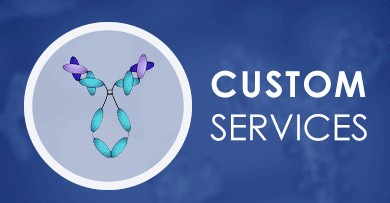+ Filter
 Loading...
Loading...

GJB6
 Loading...
Loading...Anti-GJB6 Products
-
- Derivation: Mouse
- Species Reactivity: Human
- Type: Mouse IgG2a, κ
- Application: WB, IP, IF, ELISA
-
- Species Reactivity: Human, Mouse
- Type: Rabbit IgG
- Application: WB, IF, ICC, IHC-P
- Anti-GJB6 Immunohistochemistry Kit (VS-0525-XY2814)
-
- Species Reactivity: Human
- Target: GJB6
- Application: IHC
View More Products
Can't find the products you're looking for? Try to filter in the left sidebar.Filter By Tag
More Infomation
Our customer service representatives are available 24 hours a day, from Monday to Sunday. Contact Us
For Research Use Only. Not For Clinical Use.
Background
Gap junctions allow the transport of ions and metabolites between the cytoplasm of adjacent cells. They are formed by two hemichannels, made up of six connexin proteins assembled in groups. Each connexin protein has four transmembrane segments, two extracellular loops, a cytoplasmic loop formed between the two inner transmembrane segments, and the N- and C-terminus both being in the cytoplasm. The specificity of the gap junction is determined by which connexin proteins comprise the hemichannel. In the past, connexin protein names were based on their molecular weight, however the new nomenclature uses sequential numbers based on which form (alpha or beta) of the gap junction is present. This gene encodes one of the connexin proteins. Mutations in this gene have been found in some forms of deafness and in some families with hidrotic ectodermal dysplasia.
Protein class
Disease related genes, Human disease related genes
Predicted location
Membrane
Single cell type specificity
Cell type enhanced (Astrocytes, Squamous epithelial cells, Basal respiratory cells, Ionocytes, Basal keratinocytes)
Immune cell specificity
Immune cell enhanced (T-reg)
Cell line specificity
Cell line enriched (RT4)
Interaction
A connexon is composed of a hexamer of connexins. Interacts with CNST (By similarity).
More Types Infomation



